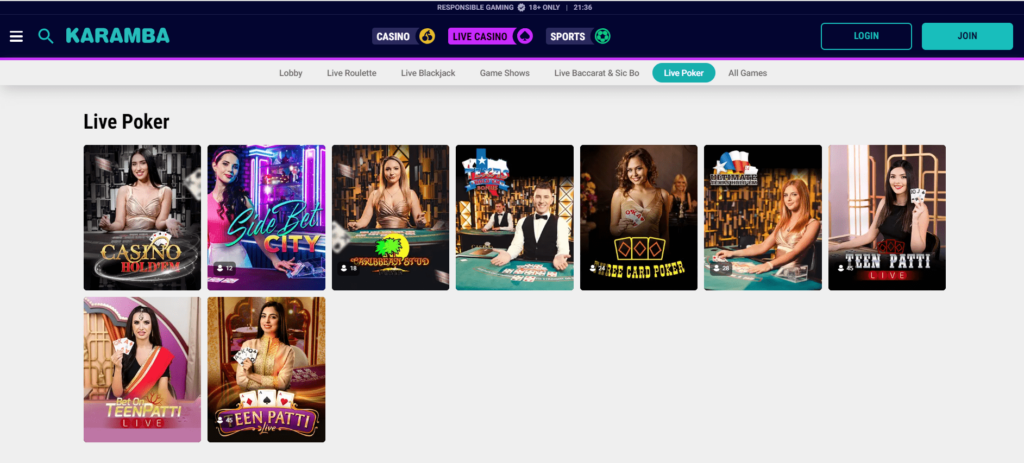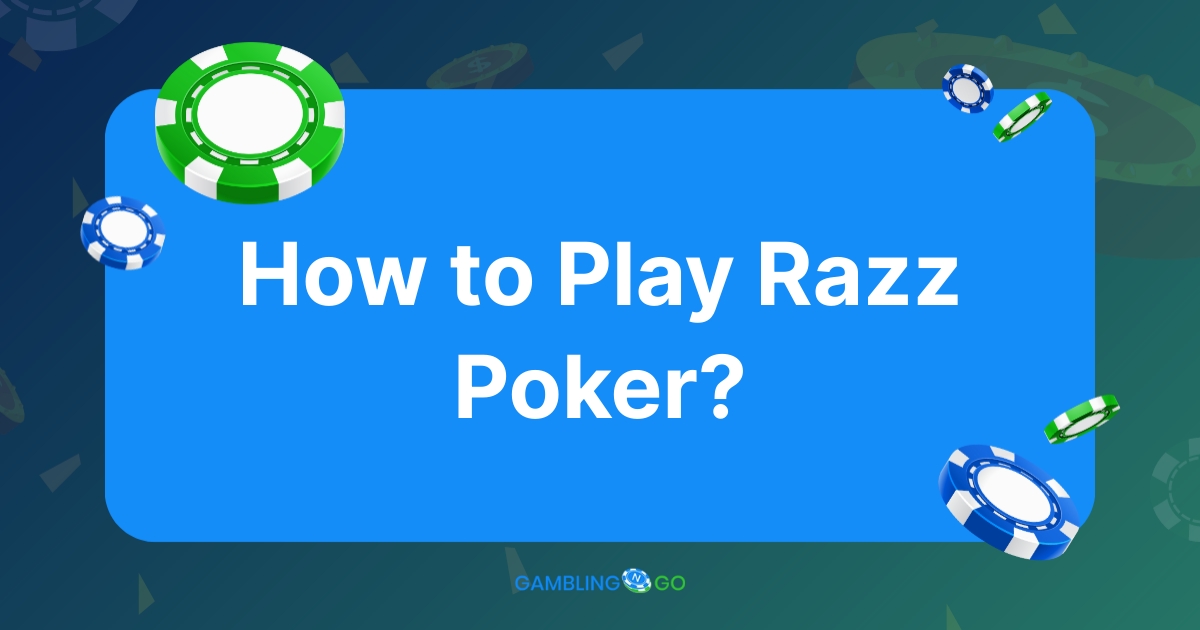Let’s talk about the poker table, more precisely, the positions around the poker table. Before we begin our detailed explanation, we need to emphasize that each seat around the poke table has its name. Still, it also comes with a positional advantage or disadvantage and requires a different playing strategy. Read on as our experts outline the poker-playing positions and the key things to know when you play in the various seats.
Poker Seating Positions
The poker seating arrangement has a significant influence on the game, as each position has different advantages and disadvantages. In Texas Hold ‘em poker, these are always relative to the button, the small and the big blind. The starting position is always one seat on the left of the button, the big blind on the left of the small blind, and so on.
Credit: Karamba
Karamba has a straightforward poker offer for everyone’s tastes!
Claim your Welcome Bonus Now!Quick Jump ⇣
Button Role in Poker
The button determines the starting position in the poker game. In fact, the poker positions are relative to the button, the small blind, and the big blind. In a poker game played in a brick-and-mortar casino, a poker tournament, or at an online casino, there is a separate dealer who deals with the cards and keeps track of the bets and other aspects of the game. The players are arranged around the table. But the button changes position at every new game, and the starting position is the one on the left of the button.
In a private poker game where there is no dedicated dealer, every player gets their turn at dealing the cards, which is called the dealer button. Still, the same poker rules apply, and the positions are always arranged clockwise or from left to right, starting from the button dealer, as the dealer acts last in the round.
Blinds: Small & Big Blinds
The blinds are the mandatory bets that the players must place in the pot as an incentive to build the pot. For example, in a game that is labeled $10/$20, the small blind amount is $10, and the big blind amount is $20. The blinds are placed before the start of the play, i.e., before the dealing of the cards.
The small blind is the starting position in the poker game, and the player sitting in the small blind position needs to enter half the minimum table bet; in our example, they enter $10. On the left to the small blind is the big blind position, and the player sitting in that position needs to enter the minimum table bet or $20 per our example.
Early Position: Under the Gun
The position on the left of the big blind is called early position, Under the Gun or UTG position, and this is the first one to act pre-flop. It is the most challenging position to play on the poker table because there is no information on the other player’s actions. If the blinds fold, the UTG position is also the first one to act post-flop.
The best strategy to apply when playing in the UTG position is to only play very strong pairs and high suited cards, as the decisions are only based on the strength of the hole cards.
The following early position is the UTG+1, which is on the left of the UTG position and the UTG+2. It is also a disadvantageous position, as the only info you have is the move of the player before you. Again, you should assume a tight play when in the early positions and play only when you have a very good poker starting hand.
Middle Positions: Lojack & Hijack
The following position is the Lojack position, which is the first middle position on a poker table; the Hijack is the position on the left side of the Lojack. In a nine-player poker game, the Lojack is in the middle position, while in a six-player poker game, the Lojack is actually in the UTG position.
The strategy for the Lojack and Hijack positions can be more relaxed than the UTG positions, and when you play in the middle position, you can play with a good range of starting hands that include high pocket pairs and high cards. However, if the later hands fold in the pre-flop, the middle positions can assume a more aggressive post-flop poker strategy.
Late Positions: Cutoff & Button
The next positions around the poker table are the late positions which are called the cutoff and button, respectively. The cutoff position has a good positional advantage as they can see a lot of the action before their turn.
However, the button position (the player seated to the right of the small blind position) has a substantial positional advantage as it is the last to act; the button position player will get to see all the previous actions and can hone their strategy accordingly. The cutoff and button positions are known as playing in position, while the other ones are referred to as playing out of position.
Also, when it is your turn to play in the cutoff and button position, you can play with a broader range of starting hands, like a wide range of pocket pairs, high cards, and high suited connectors. In a private game where there is no dedicated poker dealer, the button is also the dealer who plays last in the round.
Use Table Position to Adjust Your Poker Strategy
The poker positions we talk about here are very similar in different poker variants, but games like Texas Hold ‘em and Omaha Hi-Lo poker use a blinds structure. Other than this, the positions have the same names, and the strategies one can use are pretty similar. We touched upon basic playing strategies for every position on the poker table, and it is evident that the pre-flop strategy is closely related to the position you play in.
During the post-flop, you can really use the positional advantage in your favor. One way to do this is to take a seat to the left of a player you know is a weaker player, as you’ll have a positional advantage over them in pre-flop and post-flop.
If you are in the button position and you have a bottom pocket pair, you may think about making a c-bet on the pre-flop. But if a bet gets called by two players who usually play a tight game, then you know that folding is your best option. If you need to act first after a bet, you are in an undesirable position as you are operating on a guess of the other players’ hands. However, when you play in a late position and the players before you have called the bet, you know they have strong hands that your bottom pocket pair can’t beat.
Always take the poker pot odds when deciding on your following action, which is especially important when you play out of position. If the odds are not in your favor, then you may have to fold instead of calling a bet.
Playing In Position in Poker & Advantages
The button is the best place on the poker table, so when it is your turn to play in this position, you need to use it to the max and gain as much advantage as you can. Here we list the key advantages of playing in position in poker:
- Better Pot Control – the in position play allows you to control the pot. Because you are the last to act, you can check or call small bets, or you can raise the stakes and build the pot
- Better Bluffing Chances – bluffing in poker is best done when you have the best information, and you can take advantage of your in position play to bluff, as you have a lot of information about other players’ actions.
- Calculate Pot Odds – the last position to act in the round means you get insight into the action, which means you know how much is in the pot and the amount you have to call. It also means you can easily calculate the pot odds and see if it is in your favor to stay in the game.
- Notice Poker Tells – noticing the poker tells of your opponents is best done when you play in the late position. Also, the later you get to act in the round, the more information you can gather about your opponents and the more insight you can gain, which helps you calculate poker ranges.
Credit: Wazamba
Try the incredible poker options at Wazamba!
Claim your Welcome Bonus Now!FAQs
What are the positions in poker?
The positions around the poker table are the small blind, the big blind, Under the Gun, Under the Gun+1, Under the Gun+2, Lojack, Hijack, Cutoff, and Button.
What is the best seat at the poker table?
The best positions in poker are the late positions, or the cutoff and the button positions. The button position acts last, which allows the button position player to see all previous actions and make an informed decision.
What is the worst position in poker?
The worst position around the poker table is the Under the Gun position, where you are the first to act pre-flop. It is the position on the left of the big blind pre-flop, while post-flop, it is the player nearest to the left of the button.
What is Under the Gun in poker?
As we noted above, the Under the Gun position in poker is the position right on the left of the big blind, and it is the position that acts as the first pre-flop. It is also considered the worst position on the poker table.
Why is position important in poker?
Position is important in poker because the later you need to act, the more information you can gather about your opponents and use it to your advantage. If you act first, you are guessing, but if you act last, you can base your decision on past actions and on reading what your opponent tells are.















